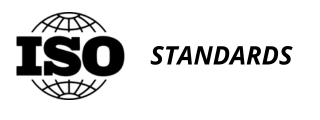In the intricate world of quality management, Clause 8.2.2 of the ISO 9001:2015 standard plays a pivotal role, mandating organizations to meticulously develop processes for identifying and defining the requirements of the products and services they offer. This clause underscores the importance of not only capturing customer needs and expectations to ensure satisfaction but also addressing additional considerations that extend beyond the customer’s immediate awareness.
Understanding Customer Needs
The primary step in this process involves a deep dive into understanding what the customer explicitly requires. This understanding forms the foundation upon which the success of product and service delivery is built. By knowing and delivering what the customer desires, organizations set the stage for meeting and exceeding customer expectations, thereby cementing the pathway to customer satisfaction.
Beyond Customer Expectations: Statutory and Regulatory Requirements
However, the journey doesn’t end with the customer’s stated needs. Clause 8.2.2 extends the scope of requirement identification to encompass statutory and regulatory (legal) requirements related to the products or services. These legal obligations may not always be apparent to the customer but are critical to ensure compliance and mitigate risks. Therefore, organizations are tasked with not only identifying these requirements but also remaining vigilant to changes in the legal landscape, adapting their processes and offerings accordingly.
Industry-Specific Considerations
The complexity of legal requirements can vary significantly across different industries and applications. Certain sectors are heavily regulated, demanding a thorough understanding and integration of specific legal standards into the product or service design and delivery. It becomes the organization’s responsibility to navigate this regulatory maze, ensuring that all offerings are fully compliant while still meeting customer needs.
Organizational-Driven Requirements
In addition to external mandates, organizations often impose their own set of requirements based on internal knowledge, experience, and strategic objectives. These may include considerations for aesthetics, branding, or other factors deemed essential for the product or service’s success. Such requirements, although not directly requested by the customer or stipulated by law, play a crucial role in differentiating the organization’s offerings and enhancing their value.
Ensuring Capability and Compliance
With a comprehensive framework for determining and defining product and service requirements, organizations must then assess their capability to meet these requirements. This involves a critical review process to evaluate whether they can realistically deliver on their promises, adhering to both customer expectations and all applicable legal and organizational requirements.
The Path Forward
Clause 8.2.2 sets the stage for a holistic approach to understanding and managing the myriad of requirements that influence the development and delivery of products and services. By establishing rigorous processes for identifying, defining, and reviewing these requirements, organizations can ensure that they not only meet but exceed customer expectations while maintaining compliance with all relevant statutory and regulatory obligations. The journey through Clause 8.2.2 is a testament to the commitment to quality, customer satisfaction, and continuous improvement at the heart of the ISO 9001:2015 standard.




